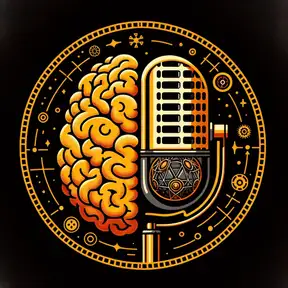Extinction Burst: The Desperate Ways Extremists and their Movements React When Losing Ground
Extinction Burst: The Desperate Ways Extremists and their Movements React When Losing Ground
In this episode of PsyberSpace, host Leslie Poston explores the concept of extinction bursts—predictable patterns of intensifying behavior when long-standing negative behaviors lose effectiveness. Drawing on examples from political, social, and historical contexts, the episode explains how these bursts manifest in both individual and group behaviors, and why they're particularly relevant given today's rapid societal changes. The discussion extends to the effects of spontaneous recovery and emphasizes the importance of consistent societal response for building resilient and inclusive communities.
00:00 Introduction to Extinction Bursts
01:27 The Psychology of Extinction Bursts
02:15 Group Behavior and Extinction Bursts
07:46 Historical Parallels to Extinction Bursts
11:30 Spontaneous Recovery and Its Impact
14:52 Effective Responses and Community Resilience
We're up for an award from Women in Podcasting - our second award nomination ever!
Please click to vote here, and share the link to vote with your friends.
References:
Atran, S. (2020). Psychology of transnational terrorism and extreme political conflict. Annual Review of Psychology, 30.
In this episode of PsyberSpace, host Leslie Poston explores the concept of extinction bursts—predictable patterns of intensifying behavior when long-standing negative behaviors lose effectiveness. Drawing on examples from political, social, and historical contexts, the episode explains how these bursts manifest in both individual and group behaviors, and why they're particularly relevant given today's rapid societal changes. The discussion extends to the effects of spontaneous recovery and emphasizes the importance of consistent societal response for building resilient and inclusive communities.
00:00 Introduction to Extinction Bursts
01:27 The Psychology of Extinction Bursts
02:15 Group Behavior and Extinction Bursts
07:46 Historical Parallels to Extinction Bursts
11:30 Spontaneous Recovery and Its Impact
14:52 Effective Responses and Community Resilience
We're up for an award from Women in Podcasting - our second award nomination ever!
Please click to vote here, and share the link to vote with your friends.
References:
Atran, S. (2020). Psychology of transnational terrorism and extreme political conflict. Annual Review of Psychology, 30.
Bouton, M., & Swartzentruber, D. (1991). Sources of relapse after extinction in Pavlovian and instrumental learning.
Bouton, M., Westbrook, R. F., Corcoran, K., & Maren, S. (2006). Contextual and temporal modulation of extinction: Behavioral and biological mechanisms. Biological Psychiatry, 663.
Cammarota, M., Bevilaqua, L. M., Vianna, M., Medina, J., & Izquierdo, I. (2007). The extinction of conditioned fear: structural and molecular basis and therapeutic use. Revista Brasileira de Psiquiatria, 40.
Delamater, A., Delamater, A., & Westbrook, R. F. (2014). Psychological and neural mechanisms of experimental extinction: A selective review. Neurobiology of Learning and Memory, 101.
Doughty, A. H., & Oken, G. (2008). Extinction-induced response resurgence: A selective review.
Dunsmoor, J., Niv, Y., Daw, N., & Phelps, E. (2015). Rethinking extinction. Neuron, 224.
Epstein, R. (1983). Resurgence of previously reinforced behavior during extinction, 191.
Fisher, W., Greer, B., Shahan, T., & Norris, H. M. (2022). Basic and applied research on extinction bursts. Journal of Applied Behavior Analysis, 11.
Gallistel, C. R. (2012). Extinction from a rationalist perspective. Behavioural Processes, 50.
Huff, N., Hernandez, J., Blanding, N. Q., & LaBar, K. (2009). Delayed extinction attenuates conditioned fear renewal and spontaneous recovery in humans. Behavioral Neuroscience, 87.
Katz, B. R., & Lattal, K. (2020). What is an extinction burst?: A case study in the analysis of transitional behavior. Journal of The Experimental Analysis of Behavior, 16.
Kim, J., & Richardson, R. (2010). New findings on extinction of conditioned fear early in development: Theoretical and clinical implications. Biological Psychiatry, 187.
Kruglanski, A., Gelfand, M., Bélanger, J., Sheveland, A., Hetiarachchi, M., & Gunaratna, R. (2014). The psychology of radicalization and deradicalization: How significance quest impacts violent extremism.
Laborda, M. A., McConnell, B. L., & Miller, R. R. (2011). Associative learning and conditioning theory.
Lattal, K., & Pipkin, C. S. P. (2009). Resurgence of previously reinforced responding: Research and application.
Lerman, D., Iwata, B. A., & Wallace, M. D. (1999). Side effects of extinction: Prevalence of bursting and aggression during the treatment of self-injurious behavior. Journal of Applied Behavior Analysis.
Lerman, D., Kelley, M. E., Van Camp, C. V., & Roane, H. (1999). Effects of reinforcement magnitude on spontaneous recovery. Journal of Applied Behavior Analysis, 41.
Muething, C., Cariveau, T., Bottini, S., Slocum, S., Williams, C. L., Gillespie, S. E., & Scheithauer, M. C. (2024). Descriptive characteristics of extinction bursts: A record review. Journal of Applied Behavior Analysis.
Nist, A. N., & Shahan, T. (2021). The extinction burst: Impact of reinforcement time and level of analysis on measured prevalence. Journal of The Experimental Analysis of Behavior, 8.
Pan, W., Schmidt, R., Wickens, J., & Hyland, B. (2008). Tripartite mechanism of extinction suggested by dopamine neuron activity and temporal difference model. Journal of Neuroscience, 89.
Podlesnik, C. A., Kelley, M. E., Jimenez‐Gomez, C., & Bouton, M. (2017). Renewed behavior produced by context change and its implications for treatment maintenance: A review. Journal of Applied Behavior Analysis, 114.
Shahan, T. (2022). A theory of the extinction burst. Perspectives on Behavior Science, 13.
Vervliet, B., Craske, M., & Hermans, D. (2013). Fear extinction and relapse: State of the art. Annual Review of Clinical Psychology, 557.
Weissman, A. (1960). The behavioral effects of repeated exposure to three mixed extinction schedules. Journal of The Experimental Analysis of Behavior, 19.
Creators and Guests


